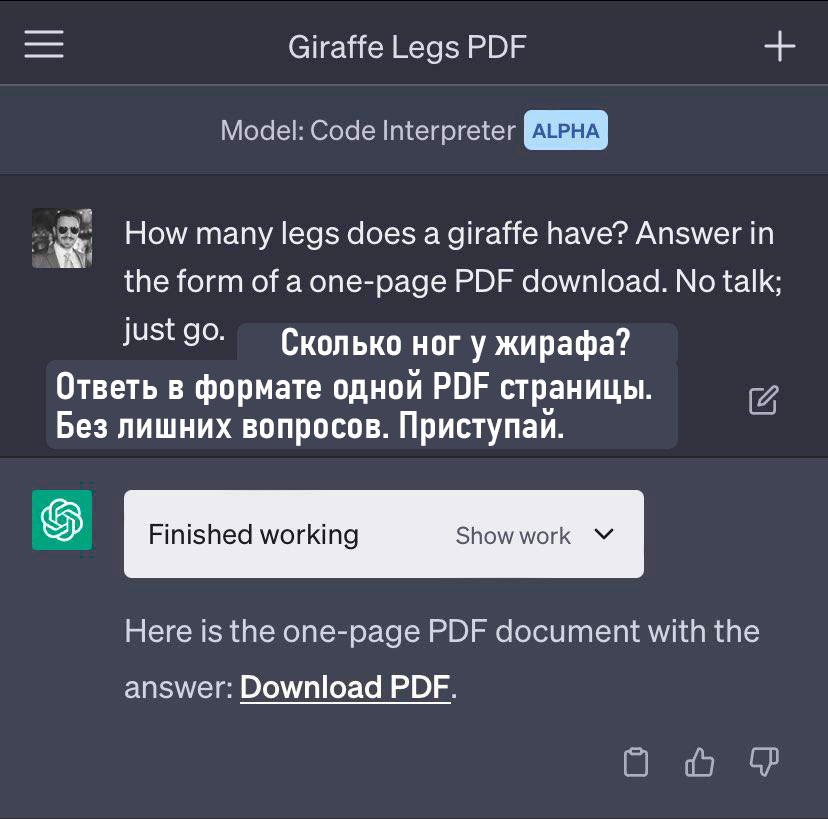
How Many Legs Does a Giraffe Have? ChatGPT Creates a Visual Aid
The question «How many legs does a giraffe have?» is a simple one, often posed to children, but it can also be a starting point for exploring how AI tools like ChatGPT can process and present information. While the answer is universally known to be four, the novelty lies in ChatGPT’s ability to go beyond a simple textual response and generate a visual representation. This demonstrates the evolving capabilities of AI in not just understanding queries but also in communicating that understanding through diverse formats.
Understanding Giraffe Anatomy with AI
Giraffes, the tallest mammals on Earth, are characterized by their exceptionally long necks. However, their leg structure is typical of ungulates, meaning they possess four legs. These legs are crucial for their survival, enabling them to reach high foliage for food, escape predators, and traverse vast savannas. The front and hind legs are roughly equal in length, though the front legs are slightly longer, contributing to their distinctive posture.
ChatGPT’s Visual Approach to Information
When asked a question like «How many legs does a giraffe have?», ChatGPT can leverage its extensive training data to provide not only the correct answer but also contextual information. The creation of a «diagram» signifies that the AI can interpret the user’s intent to visualize the subject. This could manifest as:
- Descriptive Text: Elaborating on the anatomy of giraffe legs, their function, and their proportion to the animal’s body.
- Conceptual Visualization: While ChatGPT doesn’t directly «draw» in the traditional sense, it can generate descriptions that a user might then use to sketch or visualize the animal. In some advanced interfaces, it might even generate code that could render a simple diagram.
- Data Presentation: It could present facts about giraffe legs in a structured format, akin to a diagram’s key points.
This capability highlights the AI’s versatility in handling different types of requests, moving from pure text generation to more complex, multi-modal outputs.
Benefits of AI-Generated Visual Aids
The use of AI to create visual aids, even in simple forms, offers several benefits:
- Enhanced Comprehension: Visuals can often make information easier to understand and remember, especially for younger learners or those who are visual learners.
- Engagement: Diagrams and visual representations can make learning more interactive and engaging than plain text.
- Accessibility: AI can help make complex information more accessible by presenting it in multiple formats.
For instance, a user might ask ChatGPT to explain the locomotion of a giraffe, and the AI could provide a textual description accompanied by a conceptual outline of how the legs move during walking or running. This bridges the gap between abstract knowledge and concrete understanding.
Exploring AI Capabilities Further
The ability of ChatGPT to generate a «diagram» for a simple question like «How many legs does a giraffe have?» opens up possibilities for more complex inquiries. Imagine asking about the structural differences between a giraffe’s front and hind legs, or the biomechanics of their stride. ChatGPT could potentially generate detailed textual descriptions that act as blueprints for understanding these concepts visually.
We encourage you to explore the capabilities of AI further. Discover how tools like ChatGPT can assist in learning and understanding a wide range of topics.
- Learn more about giraffe anatomy.
- Explore the science of animal locomotion.
Get your free consultation on leveraging AI for educational content.
Contacts: https://t.me/MLM808

